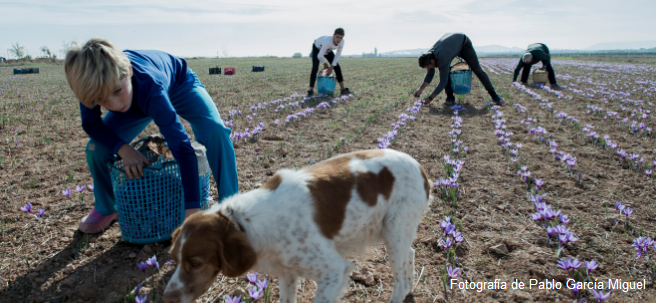
26 de May de 2020
Dinamización rural
May 26, 2020. The Subdirectorate General for Rural Environment Promotion, within the Directorate General for Rural Development, Innovation, and Agri-Food Training of the Ministry of Agriculture, Fisheries, and Food (MAPA), has published the "Study of the Training Needs of Rural Youth," a detailed analysis of the training aspects related to farm management and agricultural activity currently in demand and required by young people in our country.
- Its objective is to facilitate generational change by supporting the incorporation of young people into the agricultural sector.
- The study explores the implementation of a national program of training visits for young people on agricultural farms.
|
The objective of the study is to facilitate generational change in the agricultural sector by incorporating well-trained and prepared young people. This requires the implementation of qualification processes tailored to the needs of young people, and especially practical training processes that allow them to consolidate their knowledge and subsequently apply it on their respective farms.
For this reason, the study explores the implementation of a national program of training visits for young people on host farms as a tool to improve their knowledge, compare it, facilitate its application on the farms they manage, and strengthen the processes of incorporating knowledge and technology into the agricultural sector.
Methodology
The study analyzes the training needs of young people based on four parameters:
- Incorporation data from the last 2 periods (2007-2013 and 2014-2020).
- The characteristics and trends of the sector.
- The regulatory framework.
- A questionnaire completed by 289 young farmers and foresters.
Conclusions
A) Regarding the incorporation of young people into the agricultural sector, the study deduces that:
- The obstacles preventing young people from engaging in agriculture stem from difficulties in accessing land, financing, and knowledge, but also from the availability of services in the areas where they live and adequate infrastructure.
- As of 2018, 35,076 young people have been recruited in both programming periods (2007-2013 and 2014-2018). This represents an average (over 12 years) of 2,923 young people per year.
- Of the total number of young people enrolled nationwide, 71.92% are men (25,228) and 28.08% are women (9,848). The highest percentages of women enrolled are in the Cantabrian coast (Galicia, Asturias, and Cantabria).
- The highest percentage of new recruits is between the ages of 35 and 40. Women recruits are older than men.
- Among women, there is a higher percentage of women incorporated from outside the sector than men.
- The data indicate that new entrants into the sector are unable to reverse the decline in the agricultural profession. Compared to an average of 3,061 young people joining the sector between 2009 and 2018, the SETA loses an average of 3,845 registered workers per year.
- The number of new entrants has been increasing since 2016, either due to the push for this measure by some Autonomous Communities (e.g., Andalusia) or due to the growth in demand for new entrants (e.g., the Cantabrian coast).
B) Regarding the contents of the training:
- Approximately half of the new entrants are in continental sectors, with increasingly large farms heavily dependent on direct aid. Their training needs are geared toward areas of knowledge related to the mechanization of production processes, input savings, the incorporation of environmental criteria into operations, and resource management (water, machinery, fertilizers, phytosanitary products, personnel, etc.).
- The other half of the new entrants are in a variety of sectors, including fruit and vegetables, vineyards, intensive poultry and pig farming, and beekeeping. The required training must address the specific issues of each sector, but other skills will be common to all subsectors, such as quality management (through PDOs, PGIs, organic production, integrated production), traceability, marketing, and corporate communication.
- In terms of new technologies , training needs are primarily focused on the use and incorporation of technologies aimed at improving the efficiency of input use, as well as digital tools: Geographic Information Systems (GIS), remote sensing systems, and management software for the agricultural, livestock, and forestry sectors.
- The importance of irrigation in Spanish agriculture also justifies strengthening training in irrigation techniques and technologies. In view of the prospects for more frequent droughts associated with climate change, it is necessary to expand knowledge about soil dynamics, water protection, irrigation techniques, and the use of technologies, with water and energy conservation being particularly important.
- The growth of wage employment in the sector requires including training programs on personnel management , workforce needs planning and recruitment, occupational hazards, and logistics. Likewise, with regard to farm management, it is necessary to improve training in administrative procedures and grant management.
- In the early stages of incorporation, especially when entering from outside the sector and without family ties, one of the biggest challenges is the ability to make investments. In this regard, it is advisable for training programs to include modules on strategic planning , cost analysis, and actions focused on saving on input usage, as well as on associations.
- Finally, mastery of environmental content is key for all agricultural professionals, not only because of regulatory requirements but also because of the increased profitability that comes from addressing these issues.
Finally, the study also addresses the creation of a Network of Host Farms and the implementation of a program of training visits for young people to farms to increase their knowledge and meet their training needs.










